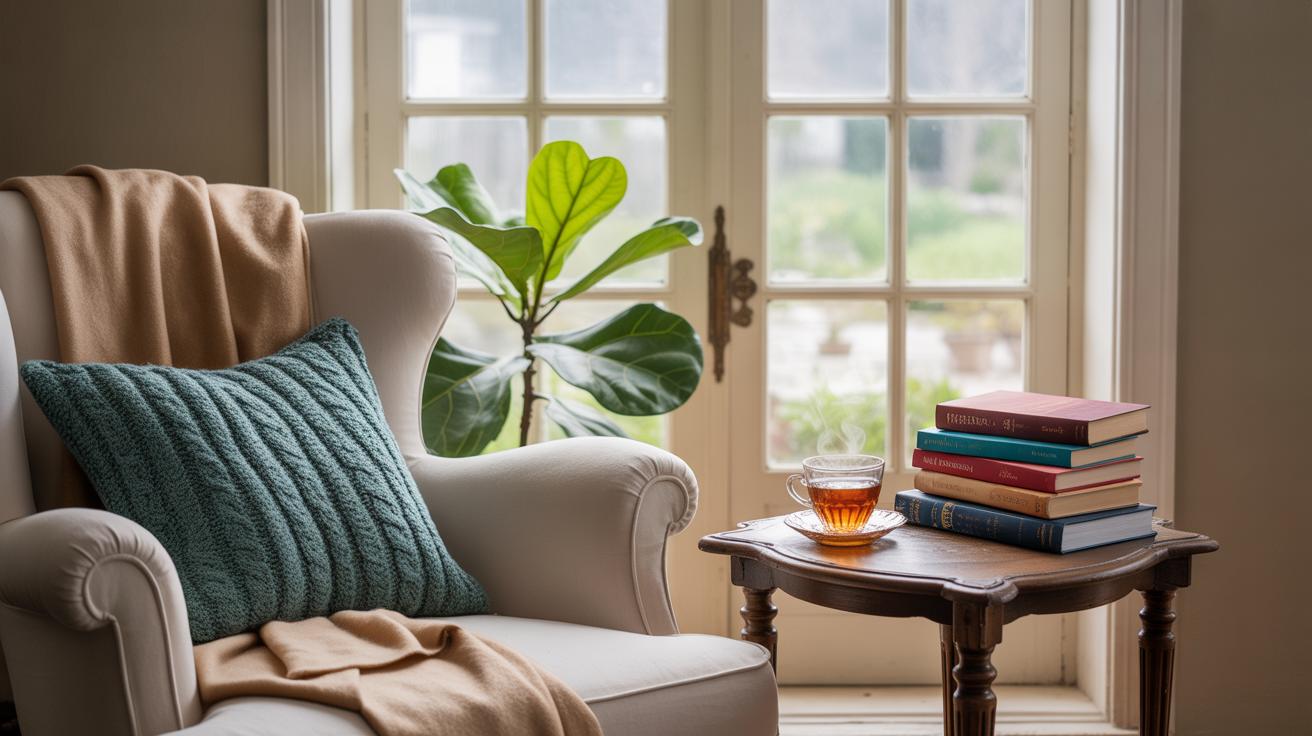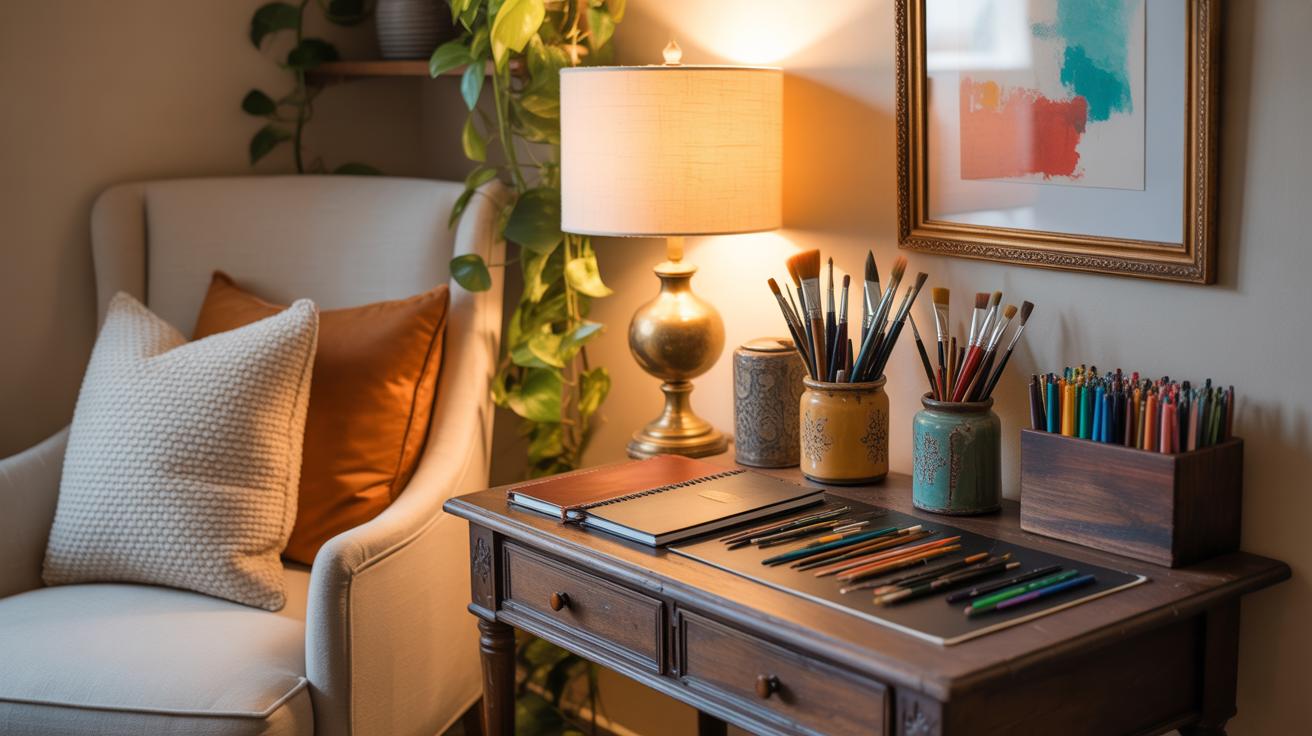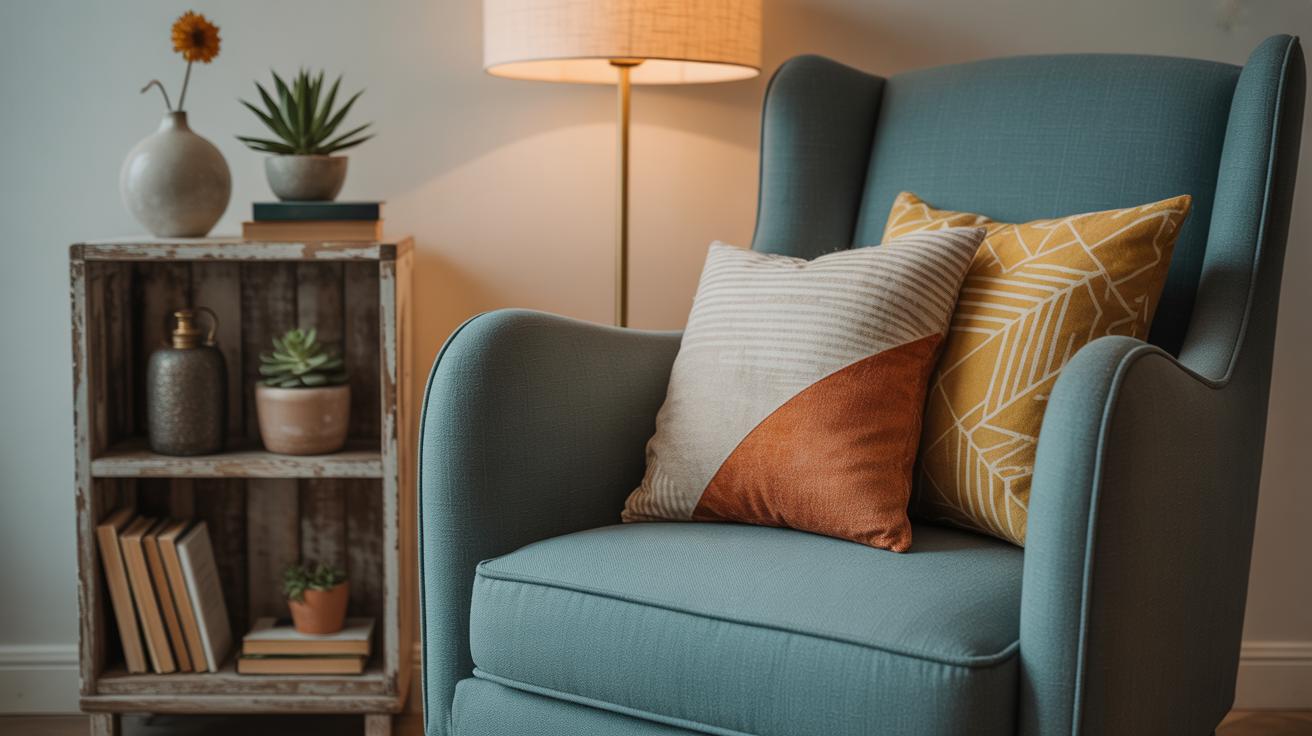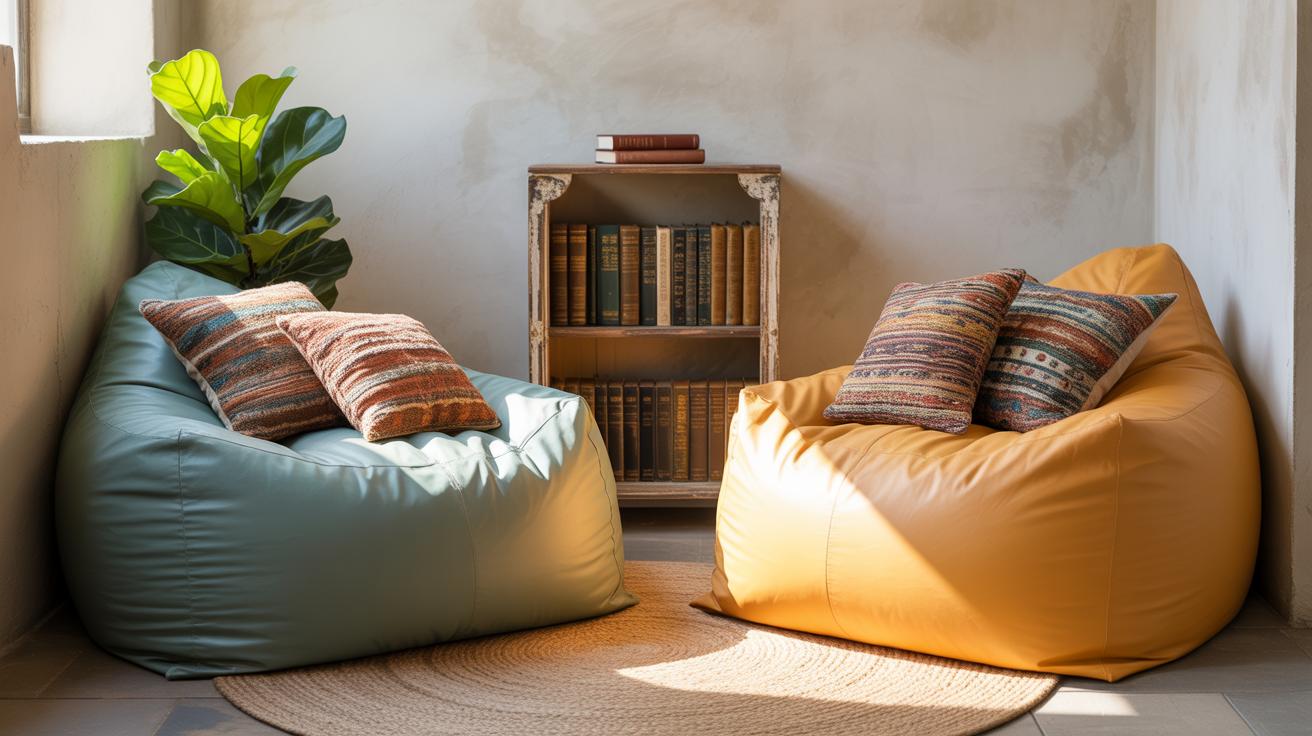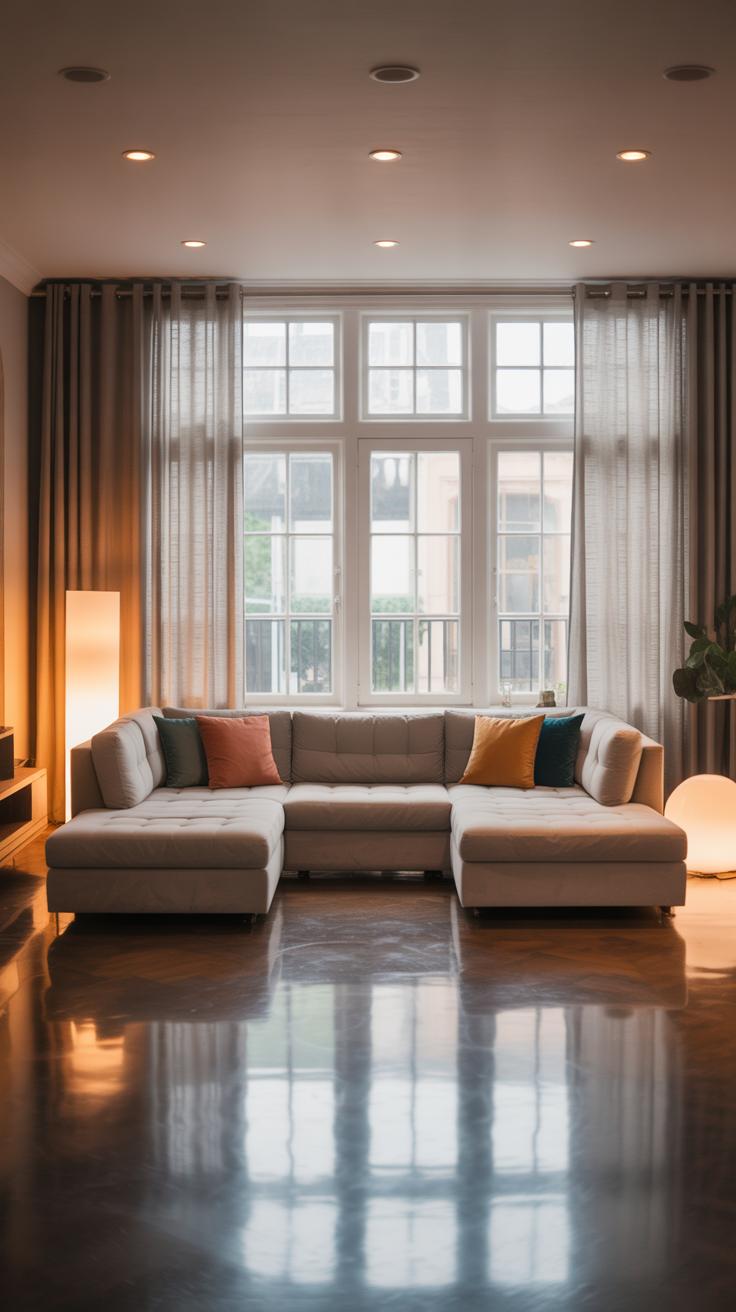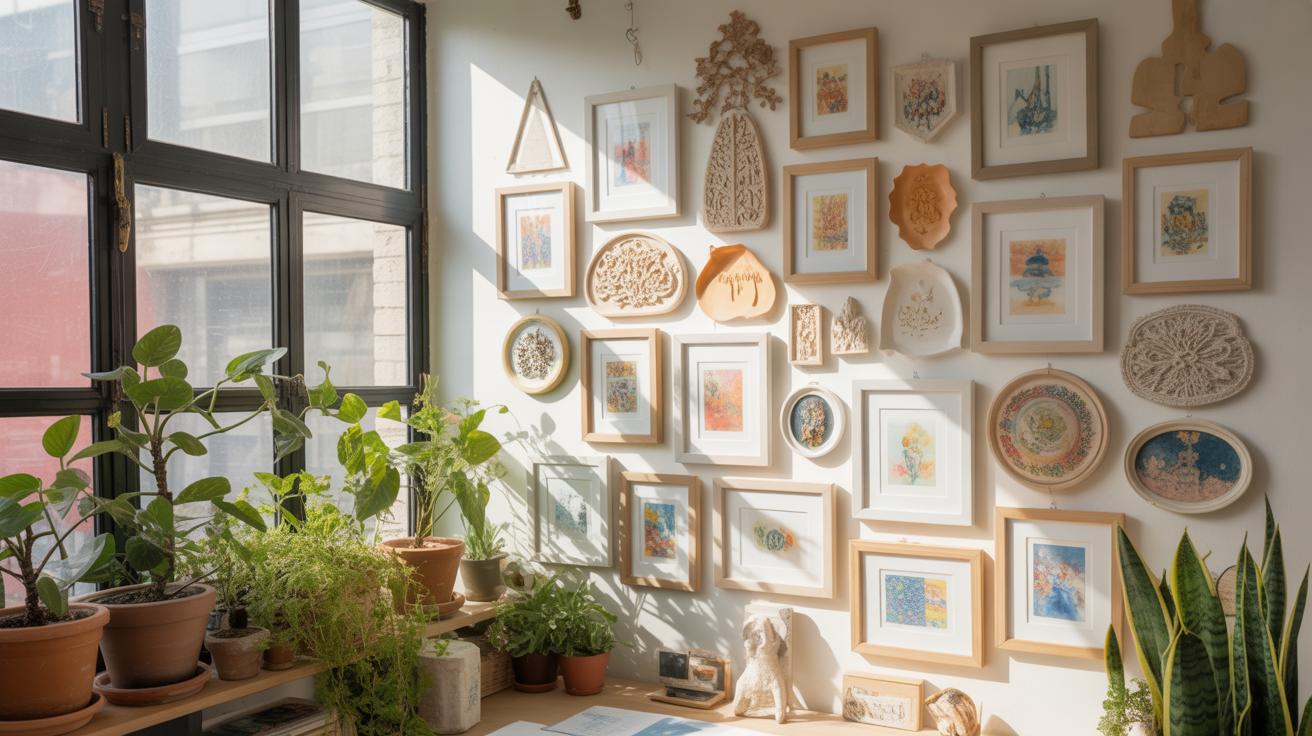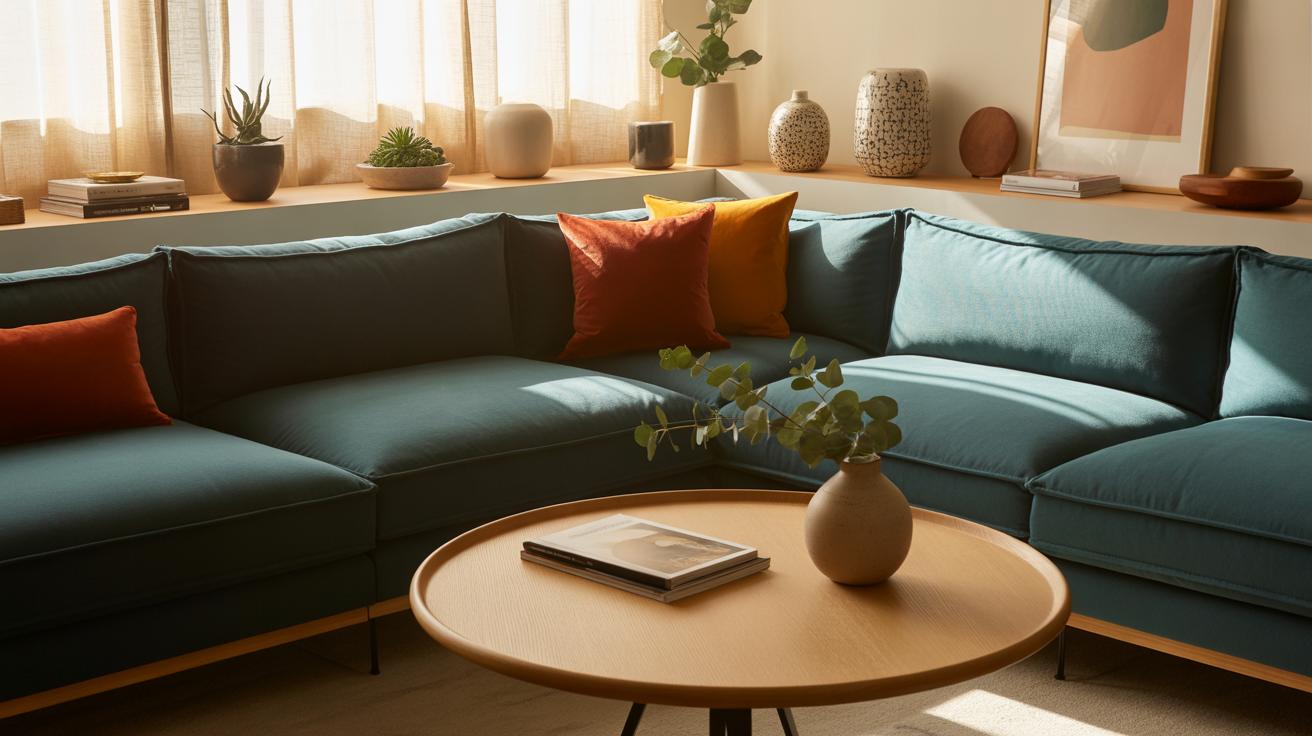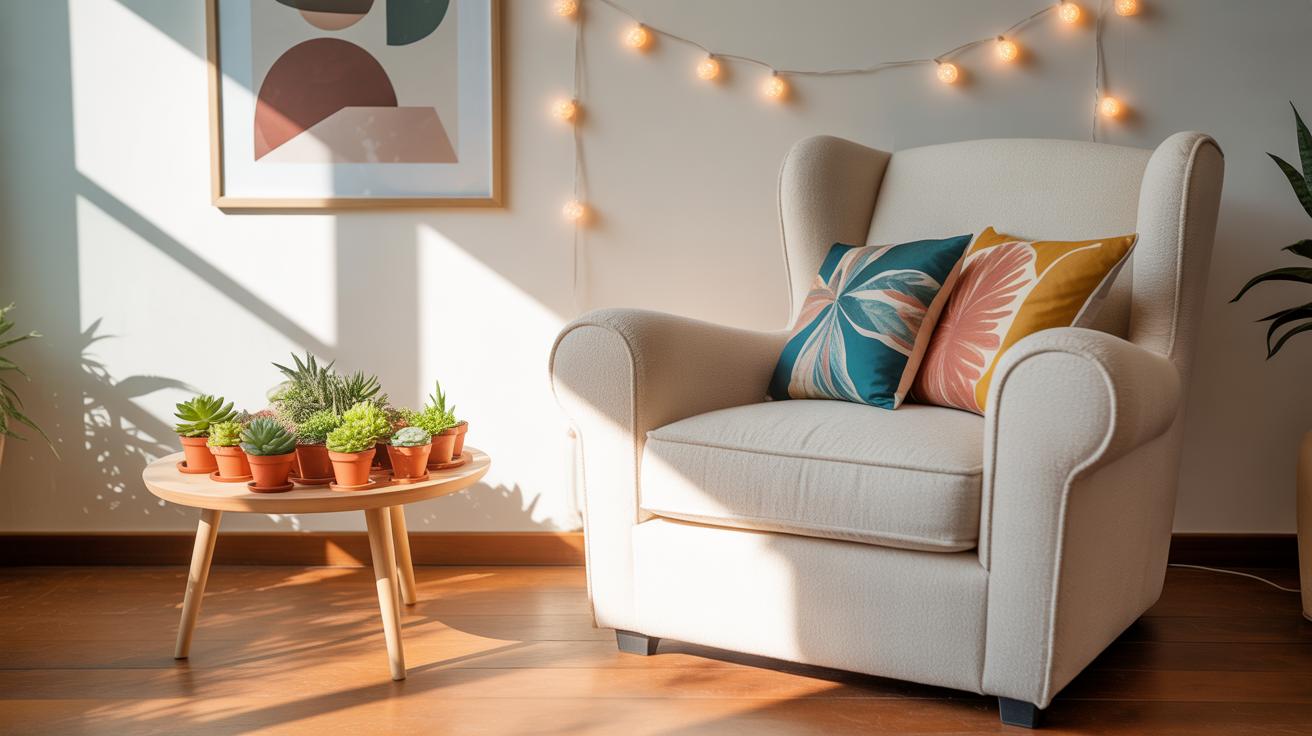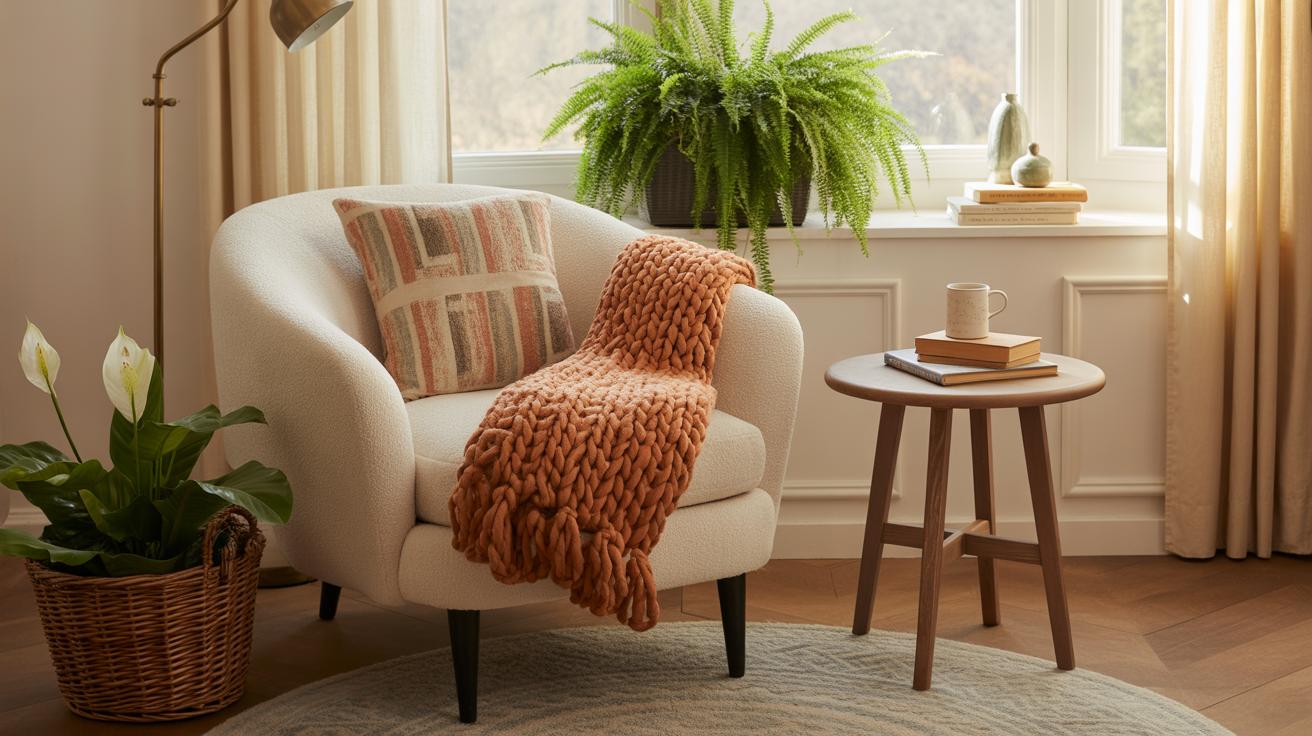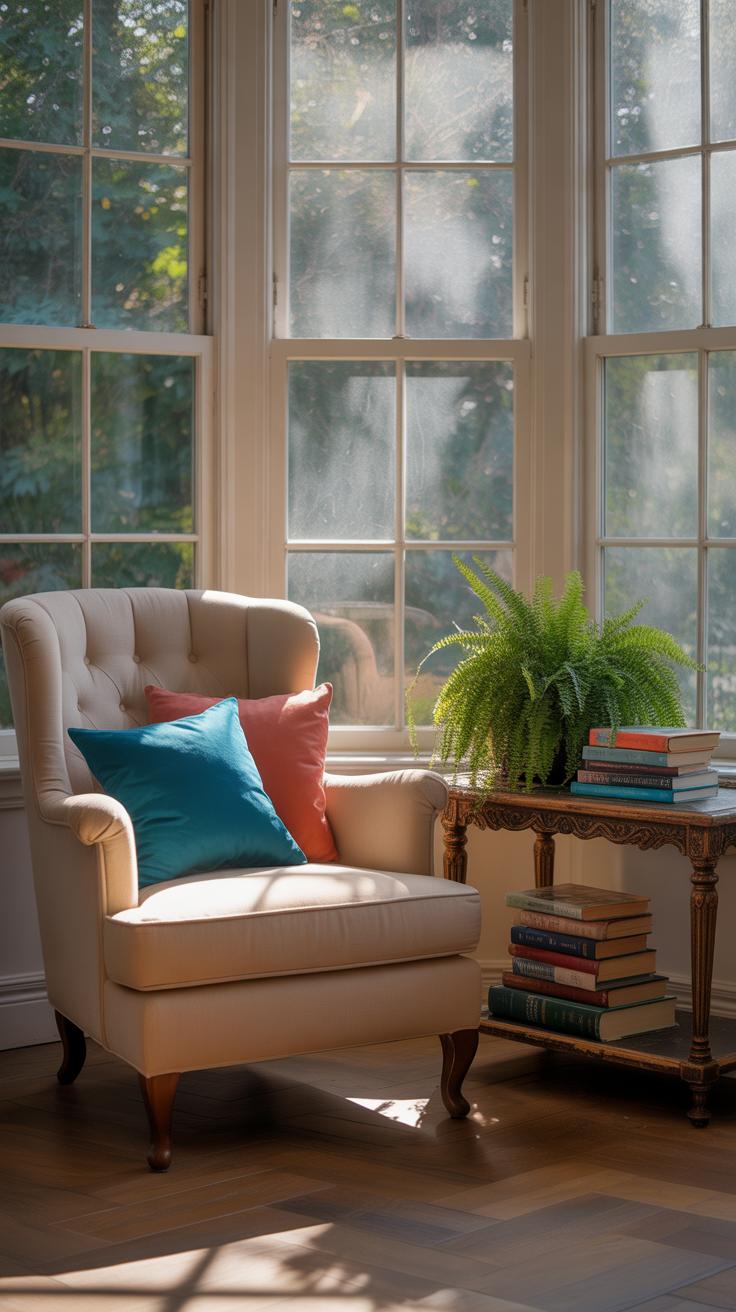Introduction
Books and a quiet space form the perfect pair for anyone who loves to read. A cozy reading corner is a small, comfortable spot in your home where you can dive into a book and relax. Planning this space near a window adds natural light and can make reading more enjoyable. This article will guide you on how to pick a spot close to a window and set it up for comfort and calm.
We will cover simple steps and useful ideas for building your own reading corner. You will find advice on choosing furniture, adding proper lighting, and including personal touches. Whether you are creating a nook for a few minutes of daily reading or a place for long reading sessions, you will find practical tips here.
Finding Your Reading Spot
Picking the perfect spot for a reading corner isn’t always straightforward. Often, the best place is near a window—but how do you decide exactly where? Natural light is key. You want enough daylight to read without straining your eyes, but not so much that glare obscures the page or screen. Quietness matters too. Is the window near a busy street, or tucked away where the house is calm? Noise can easily distract, and reading needs some sort of peaceful backdrop.
Space plays a role, of course. You need enough room for a comfortable chair and perhaps a small table or bookshelf. Don’t forget about outlets if you use a lamp or charge devices. Sometimes the spot near the window seems perfect until you realize it’s too narrow or cramped. It helps to test the area for a few days—sit there with a book, see how the light shifts, listen for sounds. You might find your “ideal spot” needs a little tweaking.
Why Choose a Window Spot
Reading near a window offers more than just good light. Daylight changes throughout the day, which can subtly lift your mood and keep you alert. Fresh air matters too—opening a window can improve concentration and make the room feel less stuffy. There’s also something about watching the outside world during breaks—a tree moving in the breeze, birds passing by—that offers a quiet moment to recharge without losing focus.
On some days, the connection to nature through the window might even inspire you or help with creative thinking. Yet, sometimes windows can bring distraction: cars, people, or street noise. So, it’s a bit of a balance between being connected and being isolated. But most would agree that the benefits usually tip the scale toward windows being favorable reading spots.
Space Check Before Setup
Before settling in, take some measurements. Check if you have enough floor space not just for your chair, but also for movement. Can you stretch your legs? Is there room for a lamp or a side table? Think about how much space you want around you—not just physically but visually too. A cramped corner might feel claustrophobic after a while.
Consider the window sill height and width as well. Could it double as a shelf for books or a cup of tea? Look at the wall space too. Some wall area near the window might be perfect for hooks, shelves, or art that makes the space your own. It’s helpful to sketch the space or use tape to outline furniture placement before buying anything. It saves future hassle. Sometimes, a spot that looks large enough in theory feels tight once furniture is added.
Selecting Furniture for Comfort
Choosing furniture for a cozy reading corner near a window isn’t just about looks—comfort and fit matter just as much. You want pieces that don’t overwhelm the space but still invite you to linger. Size should match the nook; a bulky chair might crowd a small corner but could work in a wider bay window. On the other hand, a slim profile armchair or a built-in bench might fit perfectly without feeling cramped.
Consider the design carefully. If your window lets in a lot of light, lighter fabrics might make the spot feel airier. Yet, darker tones can create a cocoon-like vibe, which some prefer when reading. The style should blend with the rest of your room, but don’t shy away from something a bit different if it sparks joy.
Picking Chairs and Seating
There are lots of seating options to balance between function and comfort:
- Armchairs: Often the go-to, offering back support and sometimes cushioned arms. Look for ones with soft cushions and sturdy frames. I’ve found that a chair with a slight recline makes a big difference for longer reading sessions.
- Bean bags: Casual, informal, and easy to move. They can be super comfy but might lack posture support, which some find tiring after a while.
- Window seats: Built-in benches under a window can be magical. Add thick cushions and throw pillows to soften hard surfaces. They invite daydreaming, or maybe a short nap after a chapter or two.
Check for features like cushion padding and backrest angles. Maybe even test before buying if you can—it matters more than you might think.
Small Tables and Storage
A small table within arm’s reach makes all the difference. Think of it as your landing spot for a mug of tea or glasses without having to get up mid-story. Tables don’t have to be big. Sometimes just a narrow side table or a small vintage stool works well.
Storage, meanwhile, is your friend when it comes to keeping favorite reads close. Narrow bookshelves, stackable crates, or even wall-mounted racks save space and keep things tidy. Occasionally, I’ve seen corners where the table doubles as storage, with drawers or baskets underneath filling in the gaps.
Having a dedicated place for reading essentials keeps the area simple but ready whenever you want to settle in. What small setup could work best for your own rhythm? There’s a balance between what you want accessible and what you want out of sight.
Lighting Options for Day and Night
When it comes to reading near a window, how you use light can make or break the comfort of your cozy corner. Natural light during the day is a gift, but it needs some thought. You want to avoid harsh glare on your book’s pages or a shadow falling right where you’re trying to see. Placing your chair slightly angled or just off to the side of the window often works well. This way, sunlight floods your spot without hitting your eyes directly or casting annoying shadows.
Furniture placement matters more than many realize. If your seating faces the window head-on, that bright sun might blind you or create reflections on glossy pages. I once tried that for a whole afternoon and ended up squinting more than reading. Moving the chair just a bit to the side changed everything. It’s a subtle tweak, but it makes the light feel natural and easy on the eyes without losing brightness.
When the day turns to evening, relying on natural light isn’t possible anymore. You need lamps that provide soft, inviting illumination but still keep words sharp and clear. I tend to lean towards adjustable floor lamps or small desk lamps placed near the window bench or seat. A lamp with a dimmable feature is nice because light needs vary depending on mood and time.
Bulbs can feel tricky to pick. Too bright, and the light grabs attention away from your book, too dim, and strain sets in quickly. I’ve found bulbs labeled as “soft white” or “warm white” at about 2700K to 3000K strike the right balance. LED bulbs with a higher color rendering index (80+ CRI) also help make colors and texts stand out naturally without sharp contrasts. This kind of light isn’t harsh but gives enough clarity to keep reading late into the night.
Do you prefer light that mimics daylight, or something warmer and calming? Which option makes you want to linger longer in your reading corner? Lighting isn’t just functional, it shapes how inviting that small space feels when the sun sets.
Adding Textiles for Warmth and Style
Textiles have this curious way of making a space feel lived-in and inviting. When you add cushions, rugs, or throws, you’re not just layering fabric; you’re creating a cozy atmosphere that gently pulls you into your reading nook. A well-chosen cushion can soften a rigid chair or brighten a neutral corner. Throws offer both warmth and a casual style that says, “Stay here a while.” Meanwhile, rugs do more than just keep your feet comfy—they can subtly mark out your reading zone, making it feel like a distinct little world within the room.
Choosing the Right Cushions
Picking cushions might seem straightforward, but it’s easy to overlook how much they affect comfort and overall mood. Think about what feels good to lean against, something that’s supportive but not stiff. You might want a mix of textures too—smooth cotton, fuzzy wool, or even a velvet cover can change how you connect with the space. Color choice matters but isn’t just about matching the rest of the room. Sometimes a pop of contrast brings energy, or a muted tone can keep things calm. Have you noticed how some cushions invite you to sink in, while others feel more decorative? That’s the balance you’re after.
Using Rugs to Define the Space
Rugs often fly under the radar when people design reading corners, yet they offer comfort that you might not immediately realize you need. A rug underfoot keeps chilly floors at bay and adds a softness that cushions alone can’t provide. Visually, a rug grazes the edges of your nook, giving it shape and focus without enclosing it completely. Depending on size and pattern, it can either subtly blend or become a statement. You might hesitate to pick a patterned rug in a small corner, but a busy design can actually help hide wear or crumbs from your snacks while reading. What kind of vibe do you want your rug to create? Cozy warmth or clean simplicity? The answer can change everything.
Decorating with Personal Touches
When you create a reading corner, making it truly yours is what turns a simple nook into an inviting retreat. Adding personal touches makes all the difference—little things that reflect your style and mood. For example, placing a few carefully chosen plants nearby can add freshness and a subtle sense of calm. I find that having greenery close by, even just a small potted fern or a succulent, helps quiet the mind without needing much care. It’s like nature quietly hanging out with you while you read.
Artwork, too, plays a quiet role. Maybe a favorite print or a framed quote inspiring you to keep turning pages. If you like, it doesn’t have to be perfect or match the rest of the room exactly—something slightly offbeat can add character. A photo from a memorable trip or even a kid’s drawing taped simply to the wall can feel just right.
Books themselves are part of the decor—displayed not just stacked but arranged in ways that invite browsing. You might lean some books vertically against the wall or use a small ladder shelf to mix titles with decorative objects like candle holders or quirky knickknacks. It’s about creating a mood that feels lived-in, not showy.
Thinking about how to personalize your corner makes it one step closer to becoming a space you actually want to retreat to, don’t you think? What would you include to make your own corner feel like a little world of its own?
Plants for Freshness and Calm
Adding houseplants near your reading spot isn’t just about looks. Plants can lift the air quality, lighten the mood, and bring a quiet sense of life to the corner. Those calming effects you hear about? They aren’t just hype. I’ve noticed that even when I’m distracted or restless, a green leaf nearby can help reset my focus—though maybe it doesn’t work every time.
Try starting with easy plants, especially if you’re not a green thumb. Spider plants, pothos, or snake plants do well in lower light and don’t need much watering—perfect for a busy reader who might forget occasional plant care. A small aloe vera plant on the side table doubles as a soothing remedy for any paper cuts or dry skin too.
Placing a plant at eye level or slightly below keeps things natural and soft against the hard edges of furniture. It’s an organic contrast that somehow feels comforting. Do you notice how even a small plant can change the whole vibe of a space?
Displaying Books Creatively
Books deserve a little spotlight beyond their role as reading material. Think of arranging them where they catch your eye and invite picking up. You might organize by color—it looks nice and surprisingly makes finding a book easier once you get used to it.
Alternatively, stacking a few favorites horizontally can serve as a little pedestal for a cherished object or a reading lamp. A few tilted books on a shelf, rather than perfectly aligned, give a sense of casualness that makes the corner feel lived-in.
If your corner allows, a small bookcase or tiered shelf can work wonders. Mixing books with magazines, notebooks, or even art prints keeps the display dynamic, always evolving as your interests do. Sometimes, I move things around just to see what feels right. That little shuffle sparks a fresh feeling without much effort.
Have you ever played with your books’ arrangement just to surprise yourself? It’s an easy way to keep the space feeling engaging instead of stale.
Daily Use and Maintenance
Keeping the Space Organized
You might find that a reading corner, cozy as it is, can easily become cluttered. Books pile up, cushions scatter, and little bits of paper or bookmarks seem to multiply. It’s probably helpful to set a small routine—like putting away books after a session or using a basket to gather loose items. A simple shelf or magazine rack nearby can make a big difference to keep things orderly without effort.
Try to avoid turning your corner into a catch-all spot. It’s tempting to drop your phone, keys, or snacks there, but even small intrusions change the atmosphere. Keeping just the reading essentials close by keeps the vibe relaxed and inviting. Isn’t that what you want from a space designed for calm?
Cleaning and Refreshing Fabrics
Textiles are what really cozy up a reading nook—cushions, throws, rugs—they soak up a lot of use and sometimes, smell like a friend you don’t often see: faint but persistent. Washing cushion covers regularly or at least air them out on sunny days helps a lot. Some fabrics are durable and can go in the machine. Others need gentler care, maybe spot cleaning, which can feel a bit tedious but pays off.
Don’t overlook the rug, especially if it’s a favorite spot for pets or kids. Vacuum weekly and wipe away any spills immediately. Sometimes a quick fabric refresher spray lifts the whole mood. You might be surprised how just a little upkeep here keeps your nook feeling welcoming every day.
Safe Setup and Avoiding Mistakes
Avoiding Eye Strain
When setting up your reading corner, lighting is tricky though often overlooked. Putting a lamp directly behind you might seem fine at first, but it can create harsh shadows on the page—annoying, right? Ideally, place your light source so it shines over your shoulder or from the side. Natural light near a window works well, but watch for glare or direct sunlight—it can make reading uncomfortable, or worse, strain your eyes after a while.
Seating position matters here too. Try to sit at a slight angle to the window rather than facing it head-on. That way, you avoid squinting or adjusting your head constantly. And if your seating is too low or too high, your neck and eyes have to work harder, which can sneak up on you after a few chapters. Finding that sweet spot might take some fiddling about—don’t shy away from it.
Preventing Clutter Build-Up
Clutter can sneak into a cozy space faster than you expect. Books pile up, bookmarks get lost, and suddenly your “corner” looks more like a dumping ground. Keeping this spot inviting means thinking about storage that fits your habits. For instance, open shelves are great if you’re the type who loves to see and reach for everything, but if you tend to toss things around, maybe a basket or a small box with a lid works better.
Set up a simple routine that keeps clutter in check. I find that spending just a few minutes tidying the space after reading helps me more than I’d expect. And don’t feel pressured to keep every book here—rotate titles in and out based on what you’re reading now or soon. That way, the corner feels fresh and not like a mini library gone wild. Have you ever walked into a cluttered room and felt more tired than relaxed? That’s what we’re avoiding.
Examples of Window Reading Corners
Sometimes, a reading corner needs only a few elements to feel inviting. Take a simple setup with just a comfortable chair and a good lamp. Placing the chair by a window lets you catch natural light during the day, while the lamp provides clear illumination when the sun sets. This minimal approach works well if space is tight or you prefer less clutter. I’ve found that a reading lamp with adjustable brightness makes a surprisingly big difference. It’s easy to reposition the light depending on your mood or the type of book. You don’t need fancy furniture—just a cozy spot that feels yours.
Another option is a built-in window seat, which some people might think is too permanent, but it can create a very snug nook. Imagine a bench directly under the window, fitted with thick cushions and some throw pillows. Storage drawers or shelves beneath the seat help you stash books, blankets, or even a cup of tea within arm’s reach. Having everything tucked away keeps the area tidy but still personal. I guess it’s like having your whole reading toolkit right there. Adding a small plant or framed photo nearby gives the space a little life, making it less of a bare shelf and more a spot you actually want to settle into.
Both setups have their charm. The simple chair and lamp combo focuses on function with little fuss, while the built-in seat leans more into comfort and style. Which one feels right might depend on your room size, how you spend your reading time, or even how much you enjoy rearranging your furniture. Perhaps what matters most is how the space makes you feel when you sink into it—do you feel relaxed or frustrated trying to find the right light or a place for your book? That’s the key to any cozy reading corner near a window, really.
Conclusions
A well-set cozy reading corner near a window can become your favorite spot at home. It combines light, comfort, and quiet, all of which make reading more relaxing. Choosing the right furniture and decor helps create a space where you want to spend time. Think about your habits and preferences while setting up to make the space truly yours.
Remember to adjust lighting and seating to your needs. Small details like cushions, blankets, and shelves can add comfort and keep your books handy. With these tips, you can make a reading corner that refreshes your mind and offers a peaceful retreat every day.

